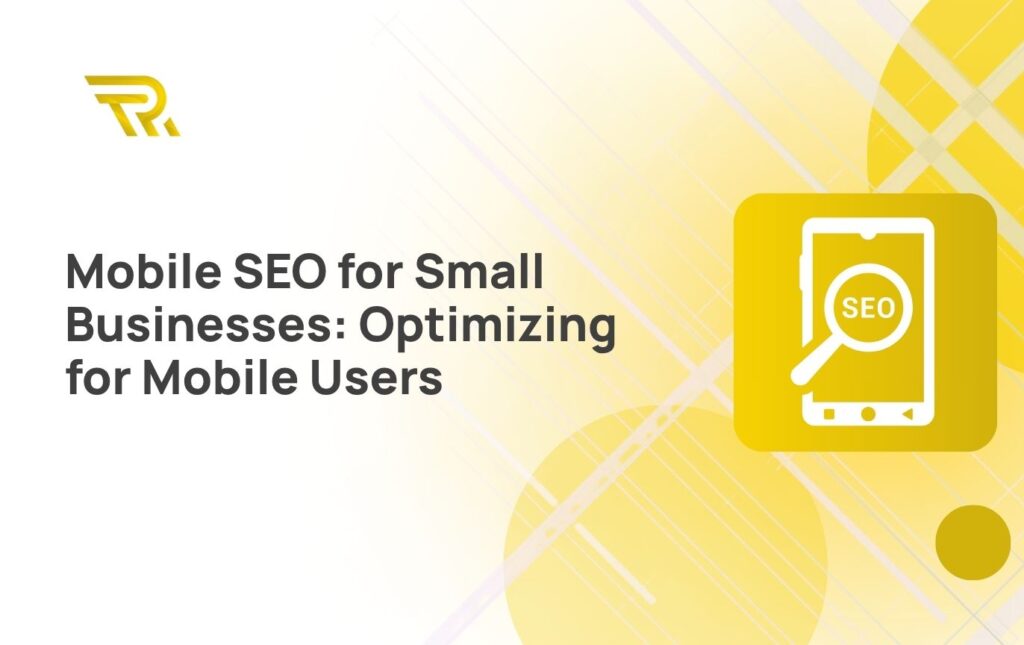Whether you’re a seasoned digital marketer or a business owner eager to stay ahead in the mobile-first era, our insights and strategies will empower you to harness the immense potential of mobile SEO. To put it simply, mobile SEO means making your website work well on mobile phones and tablets. Why is it important? Well, most people use their phones to browse the internet, and Google thinks mobile-friendly websites are essential too.
In this article, we will delve into the intricacies of mobile SEO and explore how it can significantly impact your website’s rankings and user experience. Get ready to discover the tools and techniques that can propel your website to new heights.
Key Takeaways
Focus on making your website easy to use on mobile devices with responsive design, quick loading, and readable content.
Utilize local SEO tactics to connect with nearby customers who are searching for your services on their mobile phones.
Embracing mobile optimization not only attracts more visitors but also helps build your brand’s credibility and stay ahead of the competition.
What is Mobile SEO and Why Does It Matter?
Mobile SEO (also known as SEO for mobile devices), in simple terms, is the practice of optimizing your website to provide the best possible user experience in SEO for people who visit your site using smartphones and tablets. As mobile usage continues to grow, website optimization for mobile has become a crucial part of your overall SEO strategy.
Why is mobile SEO important for you? Well, consider this: the majority of internet users today access websites using their mobile devices. Whether it’s searching for information, shopping, or even just browsing social media, mobile usage has become the norm. A significant portion of Google searches is done on mobile devices.
Approximately 58% of all searches on Google are now conducted on mobile phones. That’s a substantial chunk of search traffic that you don’t want to miss out on.
So, mobile SEO has become a fundamental aspect of overall SEO. If you want your website to perform well in Google’s search results and, more importantly, provide a great experience for your visitors, optimizing it for mobile is no longer optional; it’s a must. It involves making sure your site loads quickly, looks good and functions smoothly on various mobile devices. This way, you can cater to the needs of the ever-growing mobile audience and stay competitive in the digital landscape.
Key Elements of Mobile Optimization
Here are key elements to consider in mobile SEO for small businesses:
Responsive Web Design
To improve mobile SEO optimisation, responsive web design is critical. A responsive site adapts to any screen size, whether on a smartphone, tablet, or desktop. It adapts your website’s layout and content to different screen sizes seamlessly. Imagine your site adapting seamlessly to any device your visitors use, whether it’s a desktop, tablet, or smartphone. Statistics back this up, with responsive design leading to an 8% increase in conversion rates compared to non-responsive sites. Plus, with mobile commerce on the rise (79% of smartphone users make online purchases), responsive design ensures your website is ready to capture these opportunities.
Let’s take a look at some real-world examples. The BBC News website is a shining instance of responsive design. No matter what device you use, you’ll find a consistent and user-friendly experience.
Mobile SEO for Local Businesses
Local businesses, especially those catering to nearby customers, can leverage mobile SEO through localized strategies. Optimizing for mobile SEO optimisation includes making sure your business is listed correctly on Google My Business and using local keywords. For example, if you run a bakery in Scarborough, adding “bakery in Scarborough” as part of your content and meta descriptions will help mobile users in your area find you more easily.

Smashing Magazine caters to web professionals and enthusiasts with a flawless responsive design, delivering superb readability on all devices.

Starbucks also understands the importance of responsiveness, making it effortless for customers to access information and promotions whether they’re on a laptop or a mobile phone. So, embrace responsive design to improve user experience, boost conversions, and stay ahead in the digital game.

To have a responsive design that enhances your mobile SEO, it’s crucial to consider the following design components:
- Legible Text
- HTML5 for Multimedia
- Viewport Meta Tag
- Negative Space
- Social Share Buttons
Legible Text
Legible text is essential for a positive mobile user experience and better mobile SEO.
Research shows that 61% of users won’t return to a mobile site with text readability issues.
To improve legibility:
- Use a font size of at least 14px (preferably 15 or 16px).
- Keep paragraphs short and concise.
- Maintain a line length of 50-60 characters.
- Ensure high contrast between text and background.
These practices enhance user-friendliness and contribute to better mobile search rankings favored by Google.
HTML5 for Multimedia
Incorporating HTML5 for multimedia content is a critical step in optimizing your website for mobile users.
HTML5 offers several advantages:
- Improved compatibility with mobile devices and browsers.
- Seamless embedding of videos, audio files, and interactive elements for a consistent and engaging mobile experience.
- Enhanced accessibility and user-friendliness, leading to lower bounce rates and higher user satisfaction.
Embracing HTML5 not only boosts mobile SEO but also future-proofs your website for evolving mobile technology.
Viewport Meta Tag
When optimizing your website for mobile devices, remember the significance of the viewport meta tag.
- You can control how your web pages appear on different screen sizes and orientations using this HTML element.
- By setting the viewport meta tag correctly, you ensure that your site adjusts and scales appropriately for users on smartphones, tablets, or desktops.
- This enhances the user experience by preventing content from appearing too small or oversized and reducing the need for excessive zooming or scrolling.
Essentially, using the viewport meta tag is a fundamental step in making your website mobile-friendly, ensuring it looks and functions optimally across various devices, and ultimately boosting your mobile SEO performance.
Negative Space
Consider embracing negative space as a smart strategy for enhancing your user experience and boosting your mobile SEO performance.
Negative space refers to the empty areas around elements on your webpage, and on mobile, it means leaving sufficient room between text, buttons, and other design elements.
By incorporating ample negative space, you can achieve the following benefits for your mobile site:
- Create a cleaner and more user-friendly layout.
- Enhance content readability and visual appeal.
- Make navigation on your site smoother for mobile visitors.
This approach not only improves content readability but also reduces the chances of accidental clicks and enhances the overall aesthetics of your mobile site.
Social Share Buttons
By optimizing your mobile website for user engagement, don’t underestimate the power of social share buttons. These handy buttons allow your website visitors to effortlessly share your content on their favorite social media platforms, expanding your content’s reach and potentially driving more traffic.
For example, integrating share buttons for platforms like Facebook, Twitter, and LinkedIn can encourage users to spread the word about your articles, products, or services with just a tap. To make the most of these buttons, consider their placement on your mobile site—often, a fixed tab bar at the bottom of the screen is a user-friendly choice. This unobtrusive approach ensures that sharing is a seamless part of the mobile user experience, fostering increased engagement and social sharing across multiple networks.

Page Speed
It’s crucial to optimize your website for fast loading on mobile devices because most users will leave if it takes more than about 3 seconds to load.
Leaving the speed of your website’s page loading to chance, especially on mobile devices, is not advisable.
Here are some typical strategies to boost the speed of your mobile site:
- Employing compressed files.
- Steering clear of pages with excessive Round Trip Requests (RTRs).
- Creating Accelerated Mobile Pages (AMPs).
- Implementing page caching whenever it’s feasible.
Use tools like Google PageSpeed Insights to analyze and enhance your site’s mobile loading speed.

Mobile-Friendly Navigation
When it comes to mobile-friendly navigation, it’s all about adapting to the smaller screens of your mobile device. Unlike laptops or desktops, where you have ample space, mobile screens require a different approach. You’ll want to make sure that your essential links are easily accessible without cluttering up the screen. This often involves using elements like hamburger menus and trimming down unnecessary text.
But that’s not all – your menu and links should also prioritize the most important pages. These are the ones you want to shine in search results. By directing user traffic towards these key pages, you’ll ensure that your mobile experience is not only user-friendly but also optimized for search engine rankings. So, for a seamless mobile navigation experience, keep it simple, prioritized, and user-focused.
Content Visibility
Content visibility is a critical aspect of mobile optimization. On-page SEO for small businesses is essential as well for improving a website’s content visibility and attracting local customers.
When users access your site from their smartphones, they expect to see the same valuable content as on the desktop version. Avoid hiding content behind expandable tabs or “Read More” buttons on mobile, as Google’s Mobile-first indexing now treats such content as equally important.
Make sure your mobile visitors can access all relevant information without needing to take additional actions. An excellent example is Wikipedia, which offers a mobile-friendly interface with easily accessible and high-quality content, images, and links, ensuring a seamless experience for users. By prioritizing content visibility, you not only enhance user satisfaction but also improve your chances of ranking higher in mobile search results, ultimately driving more traffic to your site.
Non-Intrusive Pop-Ups
Avoiding intrusive pop-ups is essential for a positive mobile user experience and improved mobile SEO. Intrusive pop-ups can significantly impact bounce rates and frustrate users, leading to potential ranking penalties from Google. Research indicates that 69% of mobile users say they’re more likely to leave a site if it has pop-ups and 52% find them annoying. To maintain a mobile-friendly and SEO-friendly website and boost your SEO efforts, consider using less intrusive methods like exit-intent popups, subtle banners, or inline forms to engage users without disrupting their experience. By prioritizing user-friendliness on mobile, you can enhance your site’s overall performance and rankings.
Final Thoughts
Optimizing for mobile users, think of it this way: if your website works great on mobiles, more people will visit and trust your business. So, make sure it loads fast, looks good, and is easy to use on mobiles. These steps will help you succeed in today’s digital world.
With a deep understanding of the importance of mobile SEO, we are well-equipped to assist you in optimizing your website’s online presence for mobile users.
Our SEO services are designed to optimize your online presence and drive organic traffic to your website.
Contact us and we will help you increase your small business’s online presence.
FAQs
How does mobile SEO impact my brand’s credibility?
A well-optimized mobile site reflects positively on your brand’s professionalism and commitment to user satisfaction. By providing a seamless mobile experience, you enhance your brand’s credibility and build trust with your audience.
Can mobile SEO help my business stand out in search results?
Absolutely. Mobile-friendly websites receive higher search rankings from search engines like Google. As mobile users often click on the top search results, Mobile SEO can significantly increase your visibility and attract more clicks.
What are the benefits of investing in mobile SEO for small businesses?
Investing in Mobile SEO yields benefits such as improved user experiences leading to increased engagement and conversions, higher search rankings for better visibility, reaching local customers more effectively, and tapping into the growing audience of mobile internet users. Let our expert service company guide your business toward harnessing these advantages and maximizing your online potential.
How can I get started with mobile SEO for my small business?
Start by assessing your website’s current mobile performance using tools like Google’s Mobile-Friendly Test. Implement responsive design, optimize page speed, ensure mobile-friendly content, and consider local SEO strategies. Collaborating with our SEO professionals can also provide guidance tailored to your business needs.





